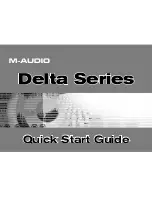
Memory Interface Routing Guidelines
70
Design Guide
6.2
Source Synchronous Signal Group
The MCH source synchronous signals are divided into groups consisting of data bits (DQ) and
check bits (CB). An associated strobe (DQS) exists for each DQ and CB group, as shown in
. The MCH supports both x4 and x8 devices, and the number of signals in each data group
depends on the type of devices that are populated. For example, if x4 devices are populated, the
72-bit channel is divided into 18 data groups (16 groups consisting of 4 data bits each, and 2 groups
consisting of 4 check bits each). One DQS is associated with each of these groups (18 total).
Likewise, if x8 devices are populated, the 72-bit channel is divided into a total of nine data groups.
In this case, only 9 of the 18 strobes are used.
NOTE:
1
In x4 configurations, the high DQS is associated with the high nibble and the low DQS is associated
with the low nibble. In x8 configurations, only the low DQS is used.
shows the trace length requirements for the DQ, DQS and CB signals. All signals in a
data group must be length matched to the associated DQSs within ± 100 mils, as shown in
. In addition, each DQS at a particular DIMM must be length matched to the CMDCLK/
CMDCLK# pair that is routed to that particular DIMM within ± 1.75", as shown in
Length matching past the last DIMM connector is not critical. Route all data signals and their
associated strobes on the same layer. Layer changes are only recommended at MCH ball breakout
and at the series resistor. The source synchronous signals require 10
Ω
± 2% series termination
resistors placed close to and before the first DIMM connector, and 22
Ω
± 2% parallel termination
resistors placed as close as possible and after the last DIMM connector (within 0.8").
Table 6-2. DQ/CB to DQS Mapping
Data Group
Associated Strobe
1
DQ[7:0]
DQS0, DQS9
DQ[15:8]
DQS1, DQS10
DQ[23:16]
DQS2, DQS11
DQ[31:24]
DQS3, DQS12
DQ[39:32]
DQS4, DQS13
DQ[47:40]
DQS5, DQS14
DQ[55:48]
DQS6, DQS15
DQ[63:56]
DQS7, DQS16
CB[7:0]
DQS8, DQS17
Summary of Contents for Xeon
Page 24: ...Introduction 24 Design Guide This page is intentionally left blank ...
Page 30: ...Component Quadrant Layout 30 Design Guide This page is intentionally left blank ...
Page 52: ...Platform Clock Routing Guidelines 52 Design Guide This page is intentionally left blank ...
Page 66: ...System Bus Routing Guidelines 66 Design Guide This page is intentionally left blank ...
Page 118: ...Intel 82870P2 P64H2 118 Design Guide This page is intentionally left blank ...
Page 146: ...I O Controller Hub 146 Design Guide This page is intentionally left blank ...
Page 148: ...Debug Port 148 Design Guide This page is intentionally left blank ...
Page 210: ...Schematic Checklist 210 Design Guide This page is intentionally left blank ...
Page 220: ...Layout Checklist 220 Design Guide This page is intentionally left blank ...
Page 222: ...Schematics 222 Design Guide This page is intentionally left blank ...















































